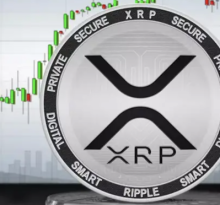U.S. Aims to Restore Emergency Oil Reserve to Previous Levels by Year-End

U.S. Energy Secretary Jennifer Granholm stated on Monday that crude oil stockpiles in the Strategic Petroleum Reserve (SPR) will reach or surpass levels seen before a significant 180 million barrel sale two years ago by year-end.
The U.S. is replenishing the SPR following President Joe Biden’s administration’s announcement of a sale of 180 million barrels of oil over six months from the reserve. This sale, the largest ever from the SPR, was initiated in response to Russia’s invasion of Ukraine with the aim of reducing gasoline prices.
The Department of Energy anticipates replenishing approximately 40 million barrels of oil by the end of this year following the 180 million barrel sale. However, an additional 140 million barrels, which would have been drawn from the SPR between 2024 and 2027, will remain in the reserve. This decision stems from the cancellation of congressionally mandated sales in 2022.
The department declined to disclose the final number of stocks expected to be in the reserve at the end of the year.
Currently, the reserve holds approximately 362 million barrels. Prior to the announcement of the sale in March 2022, stocks in the reserve stood at 565 million barrels.
Granholm mentioned at the CERAWeek energy conference in Houston that additional congressionally mandated sales could also be canceled.
Granholm emphasized that refilling the SPR is a congressional priority, stating, “that’s a conversation we’ll be having with them”.
Granholm noted that the completion of maintenance at one SPR storage site will enable the U.S. to purchase more oil.
Granholm mentioned that energy officials are closely monitoring the increase in U.S. oil prices and its implications for replenishing the reserve. The Department of Energy had set a target to repurchase oil priced under $79 a barrel. However, U.S. crude futures were trading above $82 on Monday.
She also expressed that the Biden administration’s pause on liquefied natural gas permitting “will be long behind us by this time next year”.
She did not specify when the export authorizations could resume, but dismissed estimates of a 10- to 14-month delay, referring to the pause as temporary and for study purposes only.
“The LNG pause should not be impacting major decisions globally, because it is simply a temporary pause,” the secretary remarked in response to concerns about increased coal purchases in Asia.
Granholm stated that the $60 a barrel price cap on Russian oil, imposed by the U.S. and G7 allies, has been effective. She added that the U.S. would continue to assess appropriate price levels as circumstances evolve.
The price cap, enforced since December 2022 by the Group of Seven countries, the European Union, and Australia, prohibits the utilization of Western maritime services—such as insurance, flagging, and transportation—when tankers transport Russian oil priced at or above $60.
Risk Warning: CFDs are complex instruments and come with a high risk of losing money rapidly due to leverage. 80.38% of retail investor accounts lose money when trading CFDs with this provider. You should consider whether you understand how CFDs work and whether you can afford to take the high risk of losing your money.






